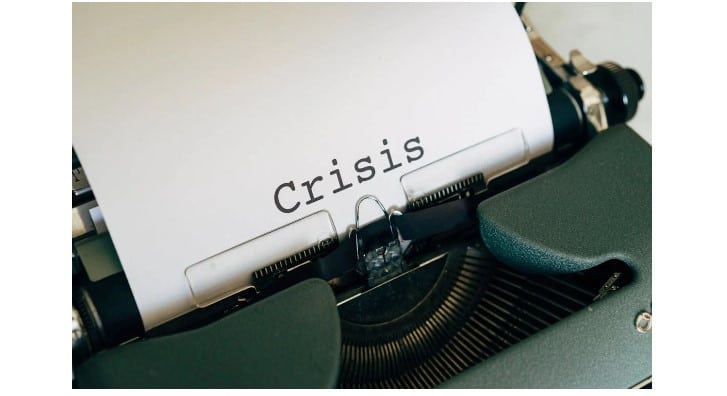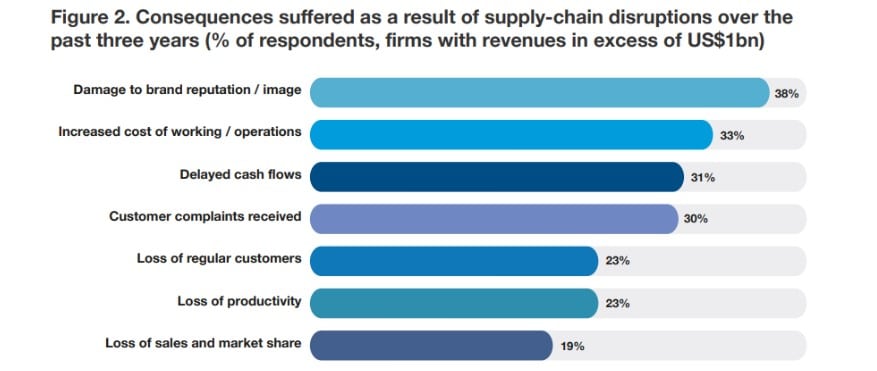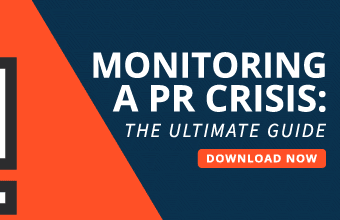Crisis can be critical. It can wreck a business in terms of lost income and disruption to key processes. From a public relations perspective, they can be especially injurious. This is because a business beset with incapacitating disasters will not present a good look to the outside world.
However, there’s a way to deal with the onset of crises before they impact your organization—putting together a business continuity plan. We’ll look at the competitive advantage your business can derive from this kind of recovery strategy, as well as go through how to create a business continuity plan. But first, let’s start with a definition.

The main problem with a lot of crises is that they’re unpredictable. Often, the best you can do is narrow crisis varieties down into what’s likely for a given sector or set of business operations.
For instance, if your business is primarily customer service, you’re more likely to have to deal with a crisis centering on issues with products and the possible attendant deleterious PR, then you are to face a serious downturn in, say, ore extraction or other wholly unrelated area. Similarly, with natural disasters, you’re less likely to have to deal with a flood if you’re in the middle of the desert than if you’re right by a river.
Knowing the broad character that a crisis is likely to take can feed into your concept of how to respond. You can then construct a set of arrangements that should deploy in the event of a likely disruption.
We’re talking about a contingency plan, a set of solutions that can apply to a given scenario. Possible components include alternative routes for key business processes to take. For instance, in the case of impaired communication, allowing remote offices to carry out a role that’s more independent of head office until the problem resolves would be useful. They can also include practices aimed at asset protection, supply sustainability, role switching, and efforts made to safeguard partners and other stakeholders.
The role of PR in your business continuity plan
There should also be an element in your business continuity plan that’s devoted to PR. A great deal of crisis management boils down to how your efforts to control a situation appear to external bodies.
So, PR has a big part to play in telling the right story and protecting the business reputation. What does this mean in practice? It means ensuring that the right people are in the right positions and using the right language in order to show your crisis management endeavors in the best light.
We’ll return to this area in due course.

Benefits of a business continuity plan
There are several advantages to putting in place a sound business continuity plan. Let’s look at the primary ones.
1. Limits financial damage
Make no mistake, crises can be expensive. Business disruptions can inflict costs of around 6-10 percent of annual revenues, and, if allowed to continue, can often lead to a business’s significant decline and even termination.
If you have a set of steps that are easy and relatively straightforward to deploy in a timely fashion, you will restrict the financial impact that a crisis can result in.
To further enhance financial responsiveness and flexibility during crises, maintaining a dedicated business credit card can provide immediate access to funds, ensuring swift action when needed.
2. Protects processes
To have steps that instruct the people within a business on what to do in a crisis will minimize the risk that critical business functions will grind to a halt, with possible supply chain logjams at particular stress points in the business infrastructure.

Image sourced from impact.economist.com
Consider as many components of your business as you can, from payroll to application spread. There are various tools you can use in this regard, such as application portfolio management.
What is application portfolio management? A method of setting out the app range of a business and putting them into logical and easily managed order.
For instance, in the context of a business continuity plan, maintaining a clean and organized Gmail Inbox contributes to the effectiveness of email as a streamlined communication channel, especially in crisis situations where quick access to information and clear communication are crucial.
3. Assists in decision making
A crisis will be dealt with most effectively when decision makers are able to employ good data in their situation analyses and can administer their resulting decisions in an effective manner.
To help in this regard, decision makers need to know ahead of time how to access the best information for any given scenario. They also need to know which channels to use to make their decisions take best effect.

4. Promotes reputation
So, here’s the big one as far as PR is concerned. A business continuity plan will give the best impression for the external world to see. There’s nothing like flailing around in a panic to make a crisis even worse, and such ineffectuality is disastrous for the business image.
With the right PR element in your business continuity plan, you can even hope to retrieve something positive from the matter. After all, there are some crises that you simply can’t avoid. But you can choose how you respond to them. So a comprehensive, effective, and positively characterized (through clever PR) disaster recovery plan can actually turn a problematic outlook into a PR win.
How to create a business continuity plan
Different business sectors will require different kinds of business continuity plans in order to protect the organization and promote customer confidence, but there are several key ingredients that no business continuity plan should be without. Let’s look at them now.
1. Establish goals
What’s your business continuity plan designed to achieve? It may be the case that it has one primary objective, or a whole bunch.
The most common goal of business continuity planning is to achieve step-by-step recovery procedures for the aftermath of disruptive events. Others include weakness identification and threat analysis (which can blur the line between what is a business continuity plan and what is risk management), as well as arriving at preventative measures and setting out a clear idea of the potential impact of disruption.

Once you have arrived at the goals that are key for your business, ensure that all parties involved in putting the business continuity plan together focus on their delivery.
2. Set scope
Is your business continuity plan for the whole organization or for specific areas, processes or departments? Organizational complexity and heterogeneity will be instrumental here: it’s much more difficult to come up with a single cross-organization plan of action for a multinational corporation than it is for a burger van.
3. Identify potential risks
No sense engaging in business continuity planning with a situation in mind that will never arise. You’ve got to be realistic in your outlook and plan around what is likely to occur. Are there particular areas and activities that are more prone to potential threat, for instance from cybersecurity risks, and are there particular possibilities that will incur huge financial risk, such as data breach fines?
You may find that analyzing your business using approaches such as risk assessment and enterprise architecture and solution architecture can help pinpoint weak spots in your structure and essential business functions. They do this by gathering data and mapping it to show the relationships between the different parts of an organization. This can reveal where nodal vulnerabilities may lurk. You can then devote more attention and resources to these areas.
4. Institute crisis responses
Once your business continuity team has modeled likely scenarios, you can put your finger on the impact that your business will suffer. You’re then in a good position to come up with possible methods to ease the problem.
For instance, a network outage can mean that communications can suffer or vanish altogether. So, you need to posit an alternative channel of communication as the route that staff should take in the event of such a difficulty.

5. Training
Once you have your comprehensive plan in place, you need to ensure that staff, from senior management down, are aware of it. Effective leadership is crucial in this stage, as leaders must not only communicate the plan clearly but also inspire confidence and ensure compliance among all team members. Just like in a fire drill situation, it’s important for staff to know ahead of time what their responsibilities are should a crisis occur.
In a crisis situation, time is of the utmost importance, so you need staff to respond as automatically as possible to the scenario, using the training they have received to slip into a particular mode and/or process. It’s obviously good for business continuity to conduct proper training. It’s also good for company culture to promote a feeling of inclusion and empowerment among staff.
6. Testing
Part of how to create a business continuity plan is laying down a robust testing regime. This is for two reasons. Firstly, it further cements procedures into the minds of staff. Secondly, it can reveal where steps need to be improved upon.
Business continuity testing should repeat regularly on an ongoing basis, as well as whenever developments in the critical systems of the business, in the threat landscape, or in the statutory framework become manifest. They should be as thorough as you can manage without causing too much business interruption. And there should be sufficient time given to learning lessons from the results achieved.
Business continuity plans for stability and profile
In this guide, we’ve highlighted the importance of business continuity plans and how, with a methodical and conscientious approach, you can deliver a solid action plan that will assist you in keeping your business safe.
Always remember that in the choppy waters of commerce, it pays dividends to plan for less-than-ideal conditions. Only in this way can you hope to weather the bad days by ensuring consistency of performance with a set of steps to follow when disaster strikes. And this can be enormously helpful from a communications and marketing perspective, as it shows the world how well-prepared your business is and how it can bounce back from any operational impacts.








